Review: Blu Life One X3
Jan 30, 2018, 7:00 AM by Eric M. Zeman
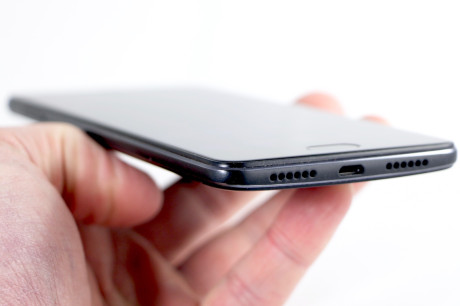
Blu's latest unlocked smartphone for the U.S. market is the Life One X3. It boasts a large screen, humongous battery, and stock Android. Here is Phone Scoop's full review.
Hardware
Is It Your Type?
The Blu Life One X3 is an affordable, unlocked Android handset with one of the biggest batteries in the market. If battery life is your top priority, the Life One X3 and its incredible power supply may fit your needs.
Body
The X3 is a large black slab. It's formed by a mix of plastic, metal, and glass. The front features curved-edge glass that's fitted into a polycarbonate frame. The frame has beveled edges that are painted with a faux dark chrome finish to give it the look of polished metal. A large metal plate covers most of the phone's rear surface. The phone doesn't do much to stand out and yet there's nothing objectionable about its looks.
It's a big'un. The X3 stands more than 6 inches tall and sits about 3 inches wide. You have to like big phones in order to like the X3. People with small hands may find it too large. The curved shape of the rear panel and rounded side edges do help a bit when it comes to in-hand comfort. The phone is weighty; you'll know it's in your pocket as you move around. I didn't run into trouble stuffing it into pockets.
Materials and manufacture are decent. I didn't see any gaps or unevenness in the seams. The metal rear gives the phone a much-needed boost in the perceived quality department. Of note, the X3 is not waterproof, nor is it designed to be particularly rugged.
With little unique about the design, the X3's face could easily get lost in a crowd. The forehead and chin are somewhat thick, as the phone makes use of the 16:9 aspect ratio for the screen. A capacitive home button is tucked into the chin. It's indented a bit, which makes it easy to find and use. Capacitive buttons flank the home button. With no backlight and no physical shape, these keys are a pain to locate consistently. (No backlight, Blu, seriously?) Small dots painted on the glass signify their location, but even these are difficult to spot. Blu doesn't even clue you in onto which button manages which function.
Fingerprint Reader
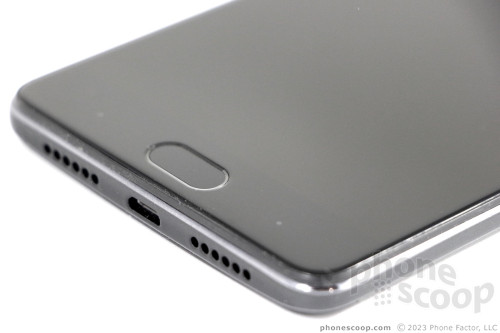
The tray for memory and SIM cards pops out easily with a tool or paperclip. The tray accommodates a microSD storage card and up to two SIM cards at the same time. (Often, phones that support two SIM cards require you to give up use of the memory card spot; the One X3 doesn't.) That makes it more flexible than many dual-SIM phones.
Like many phones, the X3's screen lock button and volume toggle are placed on the right edge. The lock button has a great profile and excellent travel and feedback. Finding and using it is a breeze. I appreciate the large profile of the volume toggle, too, though travel and feedback aren't quite as satisfying.
Blu stuck a 3.5mm headphone jack on the top edge of the phone. The company opted for a microUSB port (rather than USB-C) and positioned it on the bottom edge.
The black paint that covers the rear panel has a matte finish that shows just a touch of grain. The metal panel skins about 85% of the rear surface. Horizontal lines run from side-to-side near the top and bottom edges that separate the metal panel from the plastic ends where the antennas lie. This is a common design for Blu. The camera module protrudes from the surface just a wee bit.
Camera Module
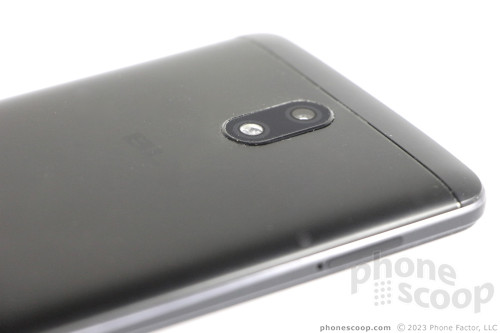
The Blu Life One X3 doesn't trailblaze any new paths in terms of design or features, but it is a functional piece of hardware that works well enough.
Profile
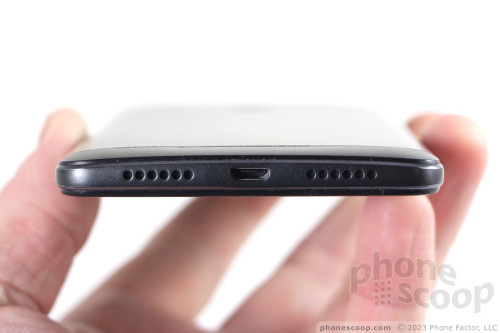
Screen
The One X3 has a 5.5-inch full HD display, a fairly typical size/resolution for flagship phones as recently as two years ago. It relies on the older 16:9 aspect ratio and is anything but bezelless. An LCD panel provides the light. The pixel density is tight enough that you won't spot individual pixels; everything on the screen looks sharp and clean. Brightness is adequate most of the time. The screen is hard to see outside, due to a mixture of glare, fingerprint grime (no oleophobic coating!) and brightness. You need to crank it up to use the X3 outside. Viewing angles are not good. There's no blue shift, but the loss of light is severe. Given the price point of the phone, it's a decent screen.
Blu tossed in its MiraVision feature for good measure. This tool lets you tweak the color profile. There are two presets — standard and vivid — or you can opt to manage all the settings manually. The vivid option, which boosts colors just a little, looked best to my eyes.
Signal
Blu ensured the One X3 is compatible with the core LTE frequencies used by AT&T and T-Mobile. You'll find support for Bands 1, 2, 3, 4, 7, 12, 17, and 28 on board. Bands 2, 4, and 12 are what's needed for the device to connect to AT&T and T-Mobile with basic service. (Both carriers operate additional bands, and phones that support them enjoy faster data and less network congestion.) As tested on both networks, the One X3 did just okay.
The phone managed to patch calls through on the first or second try. It dropped one call on each network when tested at highway speeds. Poor network conditions challenged the One X3 a bit more than they would carrier-branded phones, but it managed to do about as well as other unlocked phones in this price category.
Data speeds were nothing to write home about. Maximum data rates were in the low teens, which is about one-third, to one-fourth as quick as today's top handsets. The X3 can handle basic browsing and social networking, but streaming media over cellular often gave it a case of the stutters. Support for more LTE would likely have helped here.
Sound
I've heard much better voice phones in my day. Phone calls taken through the earpiece are acceptable at best. The earpiece doesn't produce quite enough volume even when set all the way up. If you do crank it, it distorts to the point of making phone calls painful.
The speakerphone is worse. It's a scratchy disaster. Voices come through as garbled junk. You may be able to take a regular call in a quiet space, but the speakerphone is close to useless pretty much anywhere there's background noise.
Ringers and alerts did their job and caught my ear most of the time. The vibrate alert is decent.
Battery
At 5,000mAh, the One X3's battery is larger than nearly all others in the market. It's a wonder, then, that it doesn't quite live up to expectations. I went into testing the X3 fully believing the phone would be capable of pushing through two full days of use. Instead, the phone gave up the ghost at about the 24-hour mark.
After charging overnight, I unplugged the phone at breakfast and then tested it for a full day with all the radios on and the screen set to 50% brightness. At bedtime, the phone had about 40% battery life. Left unplugged, the battery dropped 25% overnight despite the fact that the phone wasn't used at all during that period. I woke up to see the battery at 15%, which lasted a couple of hours before dying completely.
Stunningly, you will probably need to charge this phone each night. I don't think most people are in danger of running out of power before the end of a single day, but don't expect much more than that.
The phone includes the base system-level battery management tool. You may need it. Worse, the phone doesn't support rapid charging and takes forever (we're talking hours) to fully recharge the battery.
Bluetooth, GPS, NFC, WiFi
The phone's Bluetooth radio handled connections well. The phone paired easily with headphones and speakers and PCs. Calls completed via Bluetooth headsets were pretty bad, though music routed to Bluetooth speakers was acceptable.
As a navigation tool, the One X3 performed on par with other unlocked handsets. The GPS radio pinpointed me in several seconds to within about 25 feet most of the time. It coordinated with Google Maps and worked fine when put to use for point-to-point directions. Maps was sometimes a little slow during navigation.
The X3's WiFi radio did well.
This phone does not have NFC.
Software
Lock Screen
The lock screen experience is as basic as it gets. There's no Active or Ambient Display; the screen does not light up or wake up on its own to reveal incoming notifications. The X3 doesn't even offer a floating clock. You need to press the screen lock button on the right edge to wake the display, which will then show the standard Android lock screen.
Lock Clock
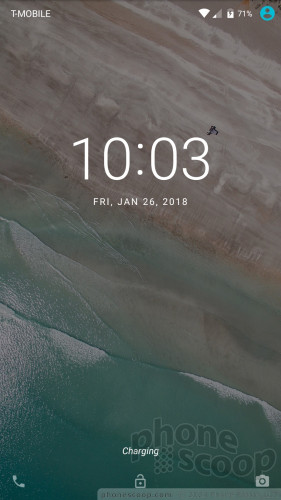
The time and date are positioned in the upper portion of the screen and notifications pile up beneath it. Two shortcuts are available on the screen: the phone in the lower left corner and the camera in the lower right. These cannot be customized.
Thanks to the fingerprint reader, X3 owners can secure the phone with a print, pattern, PIN, or password. Unfortunately, the fingerprint reader took an unusual amount of time to train and wasn't very fast nor reliable. I found using a pattern was the quickest way to unlock the phone.
Home Screens
Blu ships the One X3 with Android 7 Nougat. The experience is completely stock, as designed by Google. Other than the presence of some Blu and Amazon apps, everything about the home screens is identical to any other stock Android 7 phone.
Home Screen
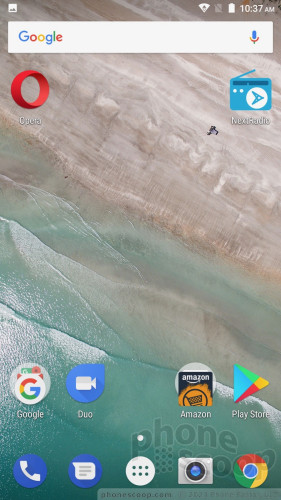
The home screen panels behave as you expect. Feel free to change up your home screens with wallpapers, app shortcuts, and widgets to suit your preference. I like that you can adjust the font and icon sizes, which lets you fit more on the screen if you wish.
Blu included the Google Now screen, which means the left-most home panel is the Google app customized with your content. This is a tool I've come to rely on heavily the last few years and I'm happy to see it included.
Blu opted for a MediaTek processor clocked at 1.3 GHz. It's paired with 3 GB of RAM and 32 of storage. I found the phone ran a little slow. It never felt spry or light on its feet. Apps were sometimes slow to open, screen transitions were sometimes gummy, and several apps (camera, maps) simply need more horsepower than the One X3 delivers.
A feature on board the One X3 called DuraSpeed can help mitigate this to a small degree. When turned on, the X3 will boost the speed of whichever app is running and de-prioritize apps still active in the background. It doesn't suspend or stop apps from running in the background, but it does give the main app access to more processor cycles and memory. Turning this on helps the camera.
DuraSpeed
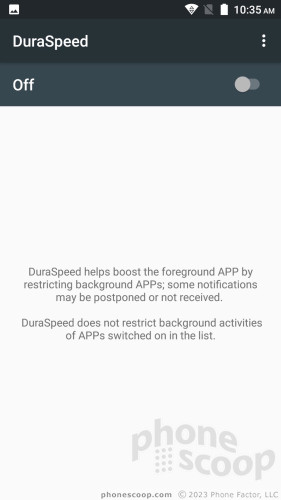
Camera
The camera is a weird one.
You can open the camera quickest with a double-press of the screen lock button. It takes about two seconds to jump to life. Alternately, you can use the lock screen shortcut.
The core viewfinder is fairly typical. The three icons on the left let you switch to the user-facing camera, cycle through flash options (on, off, auto), and select the shooting mode.
There are four basic shooting modes: normal, pano, HDR, and QR code reader. I'm puzzled by the inclusion of the QR reader. The HDR mode is crazy slow to use, but it does make obvious improvements to high-contrast scenes.
Then there's the settings menu. It's among the lengthiest settings menus I've seen. The first heading lets you adjust "common settings" that include exposure, white balance, color, sharpness, contrast, image properties, the volume keys, and shutter sounds. It's odd that you have to dive into the settings menu to tweak exposure/white balance. Under the "photo settings" heading you can tweak face detection, scene detection, timer, burst behavior, resolution, and aspect ratio. Out of the box, the One X3 is set to shoot 16:9-shaped images cropped at 9 megapixels. If you want the full 13-megapixel resolution you have to change the aspect ratio to 4:3. The "video settings" allow you to turn on electronic image stabilization, tweak audio and video quality, and so on.
Camera Settings
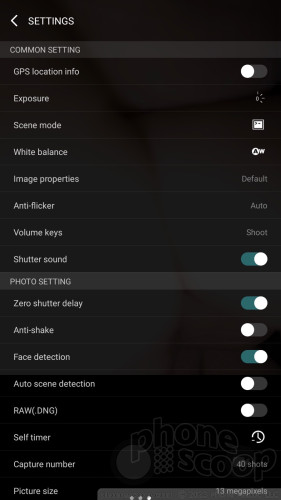
Last, there are scene modes. The One X3 offers 13 scenes modes, including night, sunset, party, portrait, landscape, night portrait, theater, beach, snow, fireworks, sports, candlelight, and auto. These presets give the camera some basic parameters to follow when shooting in each of these scenarios. Finding them and turning them on is a total pain. Worse, if you do something such as turn on the electronic stabilization, you lose the ability to access the scenes entirely.
No matter what you do with the camera, it is slow. Even with the DuraSpeed thingy turned on, the X3's camera moves like molasses. It takes forever to focus, capture, and save images. It's even slow to cycle through the flash options or jump to the selfie camera. It's not fast.
Photos/Video
Both the rear and front cameras capture 13-megapixel images. Results are middling.
The main camera actually does quite well as long as there's plenty of light. The outdoor shots I took (below) include sharp detail, proper exposure, and accurate white balance. Some were a little overblown, but using HDR did help with shots like the flower/house. Indoor shooting is an altogether different story. The camera falls apart in low-light settings, and often in average-light settings. The flash does nothing to help and often simply destroys the shot. Bottom line, the One X3's camera is uneven and unreliable.
The selfie camera took surprisingly sharp shots outdoors, but, again, it simply ruins shots taken indoors or other environs with limited light.
Video footage I captured with the One X3 was a bit more even across the board. Focus, exposure, and color all looked good for the most part. The only issue I noticed was the appearance of grain when shooting in low light.
Wrap-Up
The Blu Life One X3 is a phone of hits and misses. Blu managed to assemble a usable handset that, despite its Joe Schmo appearance, functions well enough. It has a big display, solid build, and modern features such as a fingerprint reader. At the same time, the display is nigh unusable outdoors, phone call quality is pretty poor, and battery life fell far short of my expectations.
I appreciate the stock build of Android, and yet the One X3 feels underpowered at times. The camera application, in particular, runs slowly enough to impact usability. Moreover, the camera delivers uneven results when it comes to photography.
The one thing going for the Blu Life One X3 is perhap its price. The phone is available unlocked for $150. That's really affordable, but there are better bargains out there. If you're dead set on an unlocked device, your $150 might be better spend on the Moto E4.
Profile

Comments
No messages


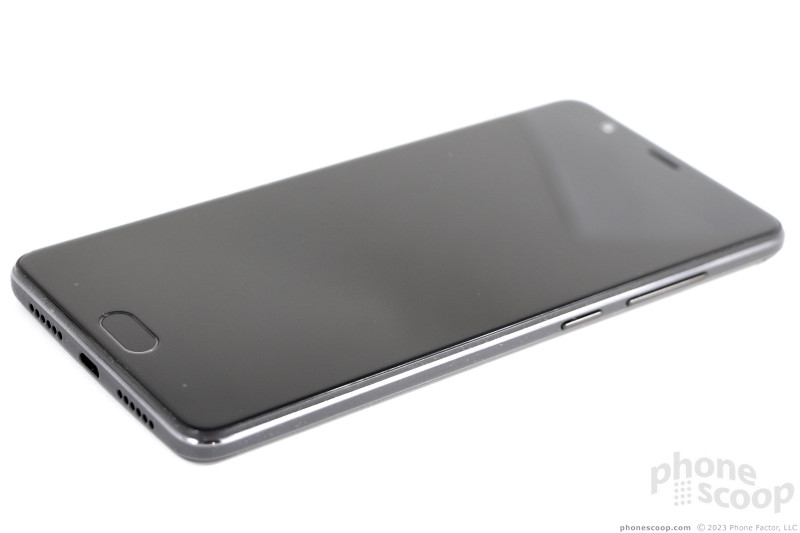


















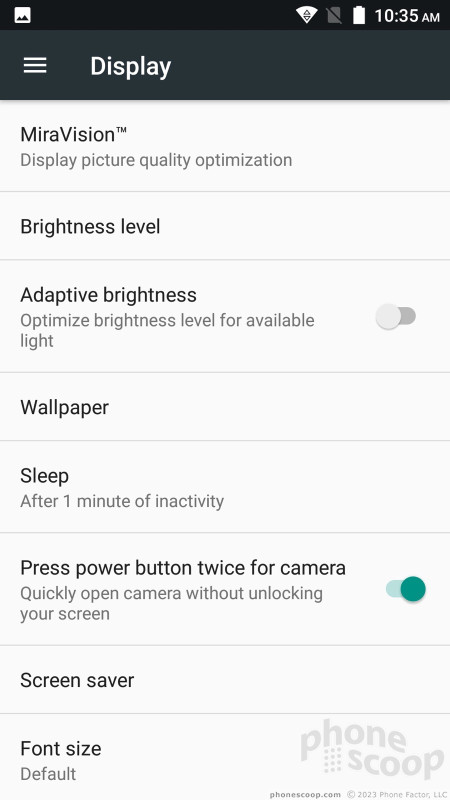





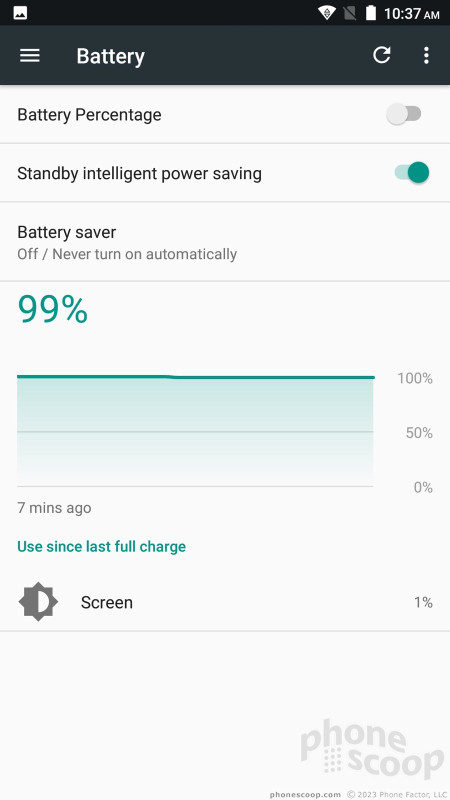












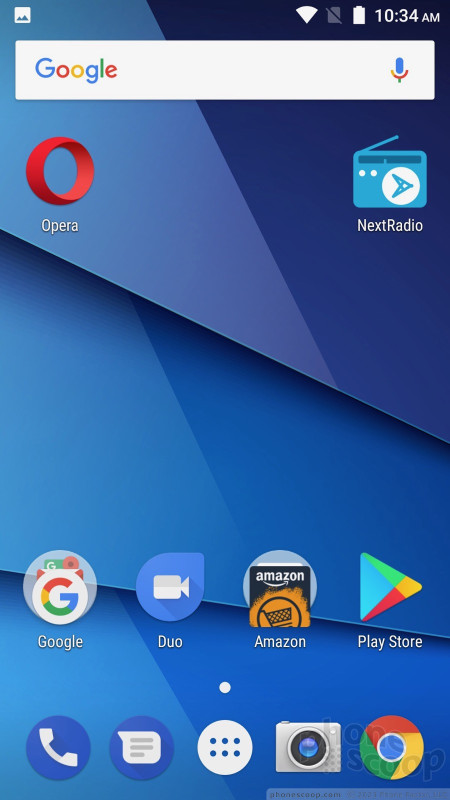










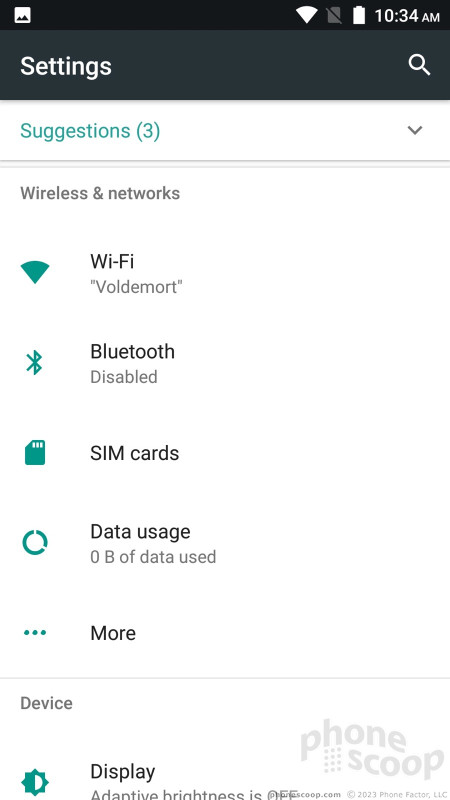








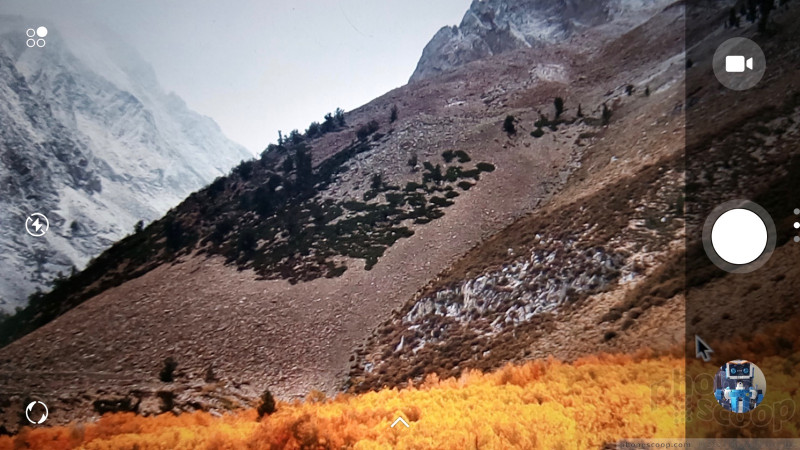





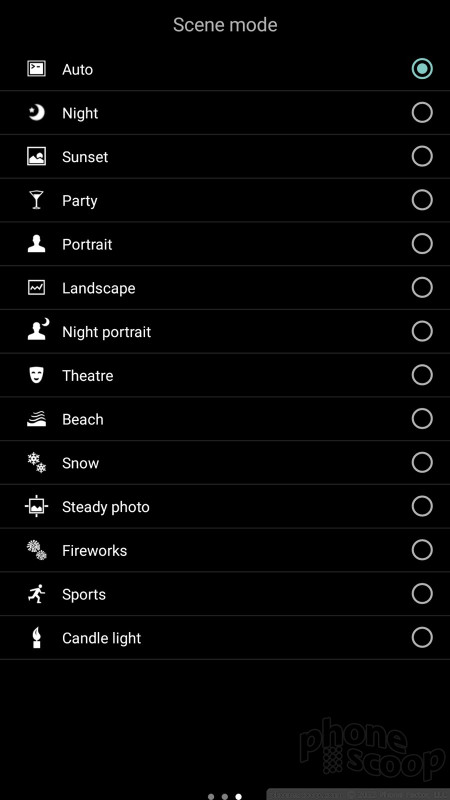





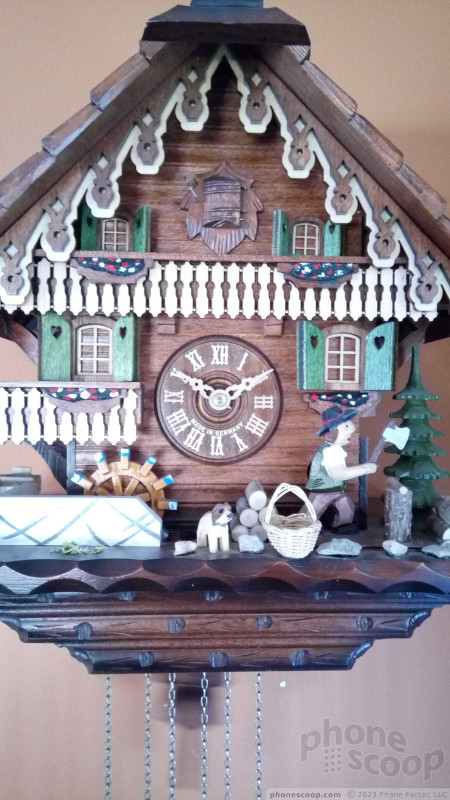


















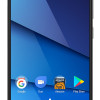 Blu Life One X3 Adopts Metal-and-Glass Design and Packs 5,000mAh Battery
Blu Life One X3 Adopts Metal-and-Glass Design and Packs 5,000mAh Battery
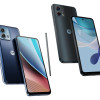 Motorola Updates its Most Affordable Phones
Motorola Updates its Most Affordable Phones
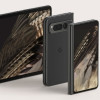 Google's Pixel Fold Goes After Samsung's Z Fold
Google's Pixel Fold Goes After Samsung's Z Fold
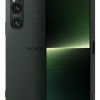 Sony Updates Flagship Phone With New Camera
Sony Updates Flagship Phone With New Camera
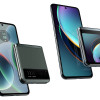 Motorola Gets Serious About Foldables with New RAZR Lineup
Motorola Gets Serious About Foldables with New RAZR Lineup
 BLU Life One X3
BLU Life One X3






